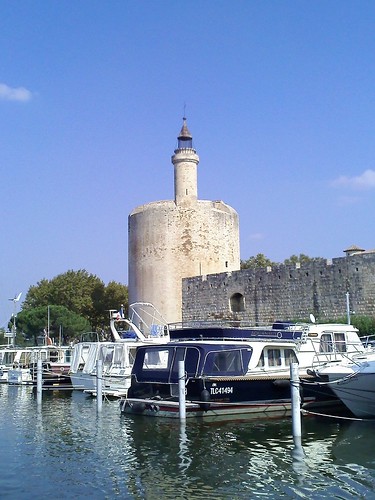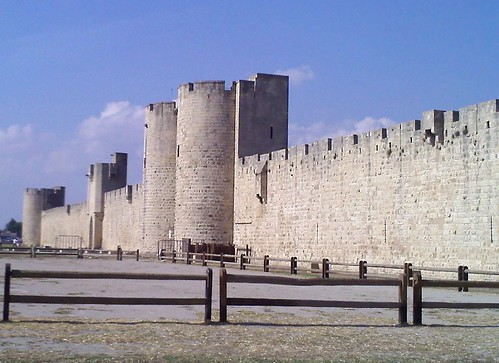Unswayed by difficulties in encouraging workers, settlers and soldiers to relocate to the region, he pressed on and re-construction of the town was completed around 1248. The fortress city was expanded by later French Kings.
 Only the Constance Tower remains of Louis' original fortifications. Its thick walls are considered impregnable, perfect for a prison. Following revocation of the Treaty of Nantes, which had granted Calvinists some freedoms in Catholic France, Aigues Mortes' walls were used to imprison the protestants. The tower of Constance was duly named after a female inmate who spent 38 years in captivity.
Only the Constance Tower remains of Louis' original fortifications. Its thick walls are considered impregnable, perfect for a prison. Following revocation of the Treaty of Nantes, which had granted Calvinists some freedoms in Catholic France, Aigues Mortes' walls were used to imprison the protestants. The tower of Constance was duly named after a female inmate who spent 38 years in captivity.Over time, the shifting alluvial basin of the Rhone rendered the port of Aigues Mortes unnavigable to ocean-going vessels. This, in effect, served to preserve the medieval city. Its now regarded as one of the most complete medieval naval fortresses in Europe. As such, its a huge tourist draw. The crusader armies have been replaced by legions of retirees. Instead of riding horses through the city streets, tourists can board the senior train for a guided tour in five languages.
 Despite its dangerous past and touristy present, Aigues Mortes is a unique and enjoyable city. After wandering around the ramparts, it's best enjoyed with a crêpe and café in the central square right in front of the statue of Saint Louis.
Despite its dangerous past and touristy present, Aigues Mortes is a unique and enjoyable city. After wandering around the ramparts, it's best enjoyed with a crêpe and café in the central square right in front of the statue of Saint Louis.

![Reblog this post [with Zemanta]](http://img.zemanta.com/reblog_e.png?x-id=cdd6b580-3b1e-4e57-8321-3bbedf1e7662)

No comments:
Post a Comment